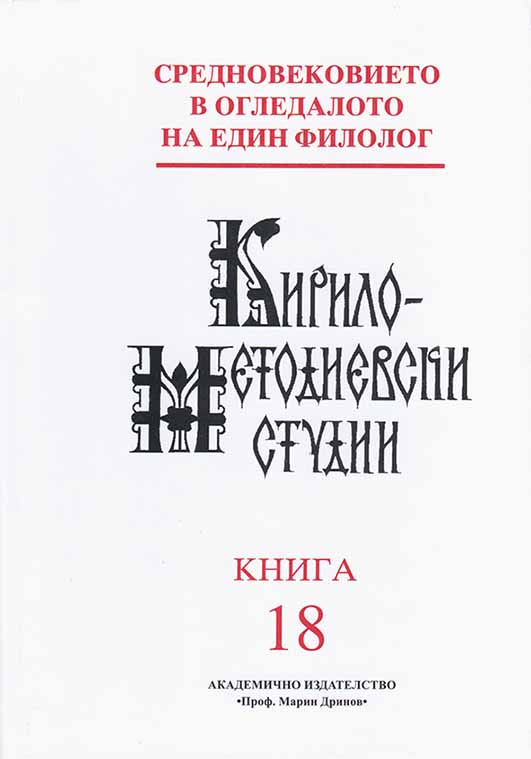Лингвистични аргументи за времето на създаване на Пространното Кирилово житие
Linguistic Arguments for Dating the Long Vita of Cyril
Author(s): Angelina MinchevaSubject(s): Language studies, Language and Literature Studies
Published by: Кирило-Методиевски научен център при Българска академия на науките
Summary/Abstract: The article examines the lexical and syntactical peculiarities of the text of the Vita in comparison with the results of the studies made of the earlier Cyrillo-Methodian translations, the homilies from the Glagolita Clozianus and other texts from the beginning of Old Bulgarian literature. Special attention has been dedicated to the lexemes доспяти and лакомьство, which according to van Wijk (van Wijk 1941) can with a high degree of probability be numbered among the Moravisms in the Vita. Data are given showing that the two lexemes were used in a wide South Slavic area and not only within a narrowly specific Moravian area and the combination of semantic signs and area-related traits is used so as to find indications as to the early origin of the Long Vita of Cyril. The similarities and the differences which the Vita demonstrates, when it is compared with the earliest Cyrillo-Methodian translations, on the one hand, and with the homilies from the Glagolita Clozianus, on the other (according to the detailed investigations made by E. Blahova – Blahova 1973) show that they refer to the Balkanisms and the Grecisms in the Old Bulgarian texts. The conclusion is made that the combination of linguistic peculiarities outlined in the article should be considered to be a part of the original text and moreover that it is not the result of the stratified piling up of phenomena of different origin, but reflects the linguistic norm of the author. The combination of linguistic features is evidence of the early emergence of the Long Vita of Cyril as it points to an author that was undoubtedly a writer of high literary stature in the spirit of Byzantine literature and culture and a person that belonged to the circle of the immediate disciples of Cyril and Methodius. It was the men of letters of the earliest period of the Cyrillo-Methodian school that combined speaking command of Greek and Slavic with literary competence in Greek and this enabled them to create without difficulty a perfect bilingual norm also on the level of the Slavic literary language.
Journal: Кирило-Методиевски студии
- Issue Year: 2009
- Issue No: 18
- Page Range: 31-42
- Page Count: 12
- Language: Bulgarian
- Content File-PDF

